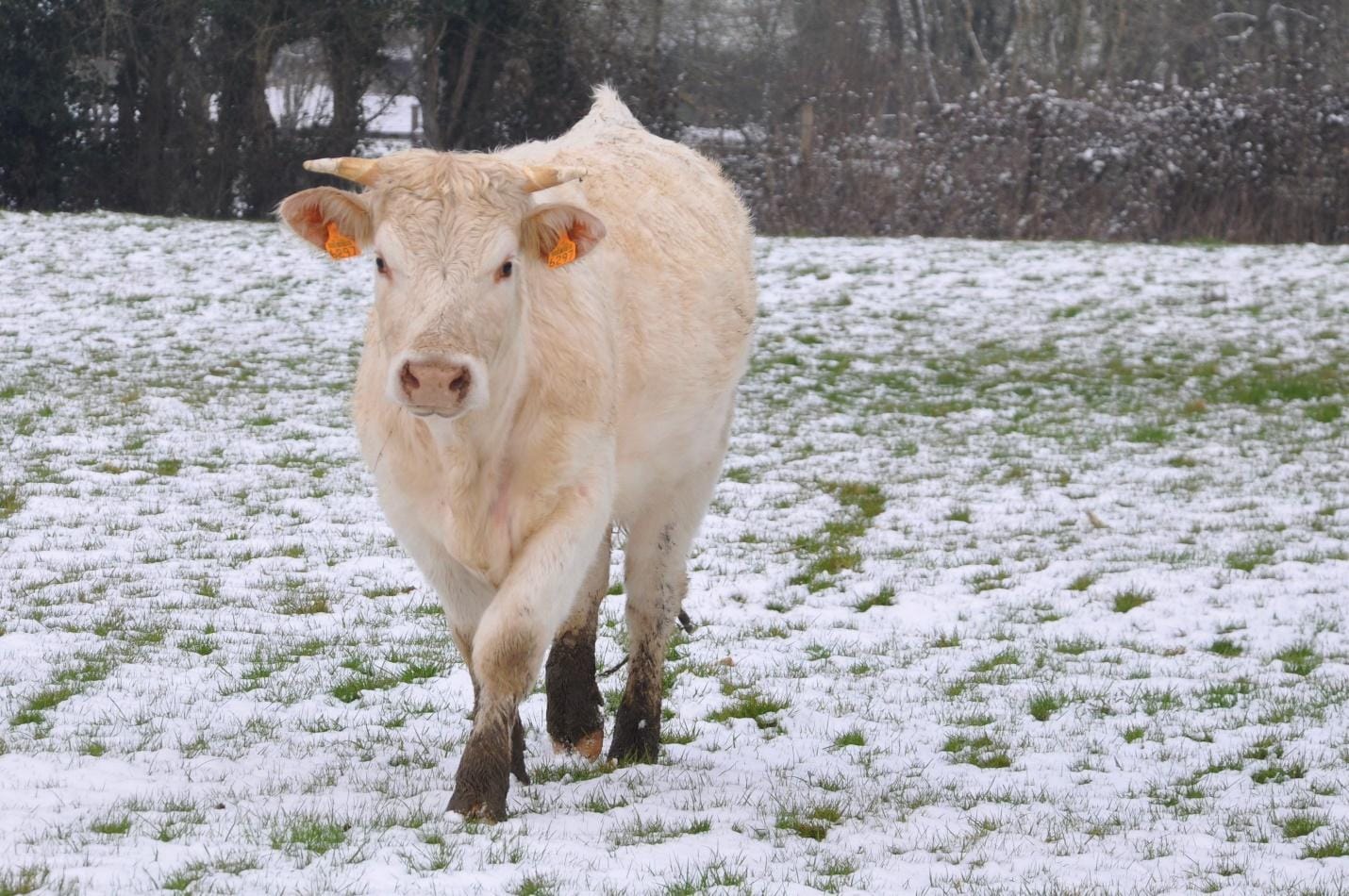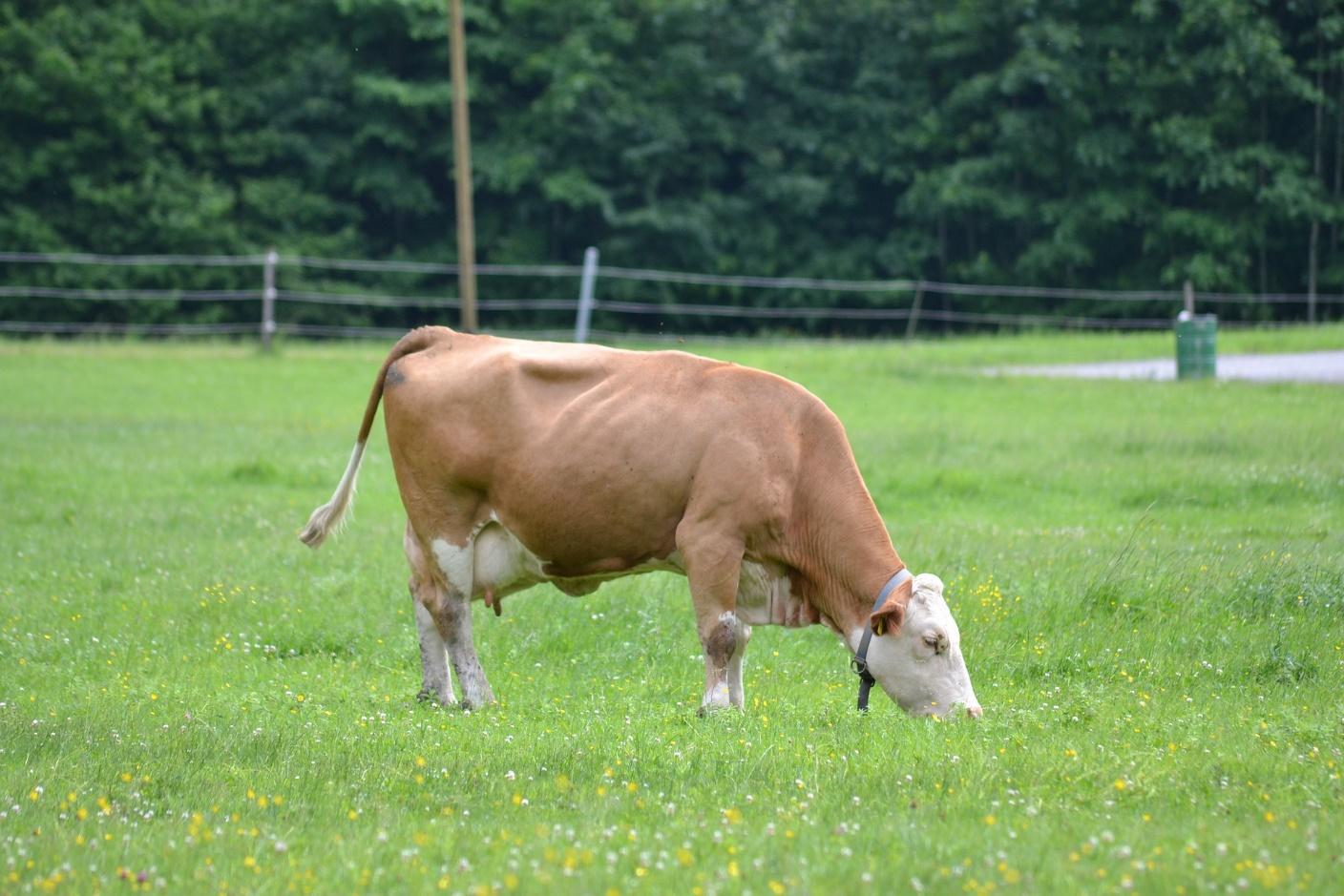During winter, your cows’ metabolisms slow down, to hang on to the fat they have so that it protects them like a soft blanket during the cold season.
After winter, during early spring, the body takes a while for it to speed up the metabolism again. And this is your golden period!
The time in which cattle can gain weight rapidly, after a period of body fat loss or slow growth is what you call compensatory gain.
Compensatory gain explained
The concept of compensatory growth goes right back to 1915 when Osborne and Mendel reported cases of animals’ capacities to grow to their full size after periods of suppression of growth.
It was later introduced in detail by Bohman in 1955, who described it as higher growth when cattle grazed summer pastures after spending the winters chomping on low-quality hay.
During winter, when the cows are tapping into their reserves of body fat, their metabolism slows down. This is a natural survival process that all animals use to hold on to the calories available from their food, especially when it’s lesser than the calories required on a daily basis.

I’m sure that if you’ve ever dieted, you would have experienced this. Losing weight for a big occasion and then putting it right back on the minute you cheat on your diet a little. Fortunately what is a big no-no for most humans is a big plus for our cows.
And let’s face it. Cows don’t care about fitting into a nice tuxedo before a wedding in the family!
Anyway, when the cow starts to get into weight-loss mode, the body taps into its reserves of body fat, which then nudge the metabolism to slow down too.
But, winter does get over, and suddenly, it's spring again! When the cattle are put out to graze the lush pasture, the metabolism takes some time to catch up. There is a slow response and it takes weeks for the metabolism to speed up.
The response is slow on purpose just so that a single day's grazing doesn’t immediately set the cow's body back into fast-paced metabolism. Isn’t that just so thoughtful of Mother Nature? It waits to see that the cow has a continuous supply of food for a couple of weeks, before revving up the metabolism engine again.
Three types of compensatory growth gains:
Complete compensation is when animals that have increased growth rates achieve as much weight as the animals that were not restricted.
Partial compensation is when animals increase growth rate but still do not achieve the same level of weight gain as the animals that weren’t restricted.
And no compensation, as the name suggests, is when animals do not show any difference in growth rate at all.

Factors that influence compensatory growth:
Calves with setbacks either before or after weaning usually don’t show much potential to exhibit compensatory growth. These animals are most likely to not catch up with their fellow calves, once restricted.
Yearling cattle who weigh at least 300 kg can catch up with their counterparts using compensatory weight gain methods if they have good nutrition available which will allow them to catch up.
In some cases, young cattle have been seriously deprived of nutrition, and then suddenly allowed to recover very fast on a high energy diet and ended up much fatter than the cattle that have been constantly fed a good diet.
If the restriction is longer and more severe, it’s less likely that the animal will compensate fully and be the same weight as the cattle that were never restricted.
Compensatory growth in breeders:
Adult cows have the ability for compensatory growth when dry, but lesser while lactating.
For breeding cows, it’s better to avoid the compensatory gain method and make sure that the cows are healthy throughout the year. Here’s why:
- The breeding cow needs to be in a good condition, with a Body Condition Score of 3 before calving, to make sure that she’s in a condition to start cycling again.
- Secondly, if your cows are going to calve during winter, they’re often grazing poor quality forage, and are going to lose body fat too once they start lactating. If spring doesn’t commence on time, it could put your breeding cows at a health risk.
This is why that while compensatory gain may be beneficial to other types of cows, it’s best not to follow this method of under-nutrition followed by weight gain for your cows that are breeding.
Let's talk advantages:
During compensatory growth, animals showed:
- Greater body weight gain
- Increased utilisation of energy
- Reduced maintenance requirements due to depression of basic metabolic rate
- Better appetites
- Better intake of feed
- Changes in endocrine status
- Altered body tissue composition
Studies have also shown, and this deserves a separate point by itself, that compensatory growth also helped induce better lactation performance in dairy cows – a 9% increase in milk yield.
One of the factors that affected the yield of milk in dairy cows was the development and growth of the mammary tissue before parturition. Experiments proved that the mammary tissues from heifers when subjected to the compensatory growth system contained more parenchyma and less fat than those from heifers who were not slotted under the compensatory growth system.
Other major findings include:
- Other major findings include:
- They consumed less dry matter which resulted in better growth
- Reproduction data remained the same – no changes there
- Heifers under the system yielded 9% more milk
Let's also discuss the limitations:
Cattle may compensate at first but then grow at similar rates to peers that did not face any loss of nutrition.
Animals that have been on slow-growth nutrition programs for a long period or even a major nutrient deprivation plan for a short period could turn out to be stunted, or not meet its genetic potential for weight gain.
The results depend on each animal, it’s genetic history and response to restricted feeding. But it has known to work in most cases.
The underlying principle of compensatory growth is that it is supported by a hearty appetite which animals have when they are offered a full feed after a period of under-nutrition.
This ability to make a strong cattle comeback is exceptionally useful in places like Australia where seasonal fodder shortfalls exist!
To sum it all up, you need to understand:
- What to expect before and after periods of nutrient loss
- What amount of nutrients are needed to achieve targets and goals set for your farm
- And how the growth rate influences one’s cattle purchasing, management and marketing plan.
And this is what will help you get the formula just right. After all, it was Mother Nature’s idea!
Interested in more such articles? Check out our farm animal health section.
- The Dedicated Team of Pasture.io, 2020-11-23